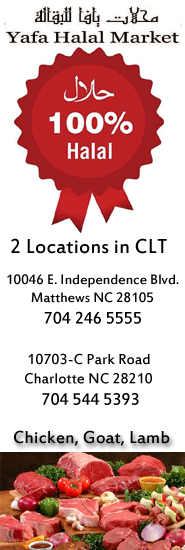|
|
|
|
|
|
Rome is the capital city of Italy and Lazio, and is Italy's largest and most populous city, with more than 2.7 million residents, and a metropolitan area of almost 4 million inhabitants. It is located in the central-western portion of the Italian peninsula, on the Tiber river.
Rome stands on top of more than two and a half thousand years of history, was once the largest city in the world and a major centre of Western civilisation. Rome is still the seat of the Roman Catholic Church which controls the Vatican City as its sovereign territory, an enclave of Rome.
Today, Rome is a modern and cosmopolitan city and the third most-visited tourist destination in the European Union. Rome's international airport, Fiumicino, is the largest in Italy and the city hosts the head offices of the vast majority of the major Italian companies, as well as the headquarters of three of the world's 100 largest companies: Enel, ENI, and Telecom Italia.
As one of the few major European cities that escaped World War II relatively unscathed, central Rome remains essentially Renaissance and Baroque in character. The historic centre of Rome is listed by UNESCO as a World Heritage Site.
Rome was a major world centre of the Renaissance, second only to Florence, and was profoundly affected by the movement. The most impressive masterpiece of Renaissance architecture in Rome is the Piazza del Campidoglio by Michelangelo, along with the Palazzo Senatorio, seat of the city government. During this period, the great aristocratic families of Rome used to build opulent dwellings as the Palazzo del Quirinale (now seat of the President of the Italian Republic), the Palazzo Venezia, the Palazzo Farnese, the Palazzo Barberini, the Palazzo Chigi (now seat of the Italian Prime Minister), the Palazzo Spada, the Palazzo della Cancelleria, and the Villa Farnesina.
Rome is also famous for her huge and majestic squares (often adorned with obelisks), many of which were built in the 17th century. The principal squares are Piazza Navona, Piazza di Spagna, Campo de' Fiori, Piazza Venezia, Piazza Farnese and Piazza della Minerva. One of the most emblematic examples of the baroque art is the Fontana di Trevi by Nicola Salvi. Other notable baroque palaces of 17th century are the Palazzo Madama, now seat of the Italian Senate and the Palazzo Montecitorio, now seat of the Chamber of Deputies of Italy.
In 1870, Rome became capital city of the new Kingdom of Italy. During this time, neoclassicism, a building style influenced by the architecture of antiquity, became a predominant influence in Roman architecture. In this period many great palaces in neoclassical styles were built to host ministries, embassies and other governing agencies. One of the best-known symbol of Roman neoclassicism is the Monument of Vittorio Emanuele II or "Altar of Fatherland", where the Grave of the Unknown Soldier, that represents the 650,000 Italians that fell in World War I, is located.
Public parks and nature reserves cover a large area in Rome, and the city has one of the largest areas of green space amongst European capitals. The most notable part of this green space is represented by the large number of villas and landscaped gardens created by the Italian aristocracy. While many villas were destroyed during the building boom of the late 19th century but a great many nonetheless remain. The most notable of these are Villa Borghese, Villa Ada and Villa Doria Pamphili.
Of much more recent origin, Rome has a number of regional parks including the Pineto Regional Park and the Appian Way Regional Park. There are also nature reserves at Marcigliana, and at Tenuta di Castelporziano.
Modern day Rome has a dynamic and diverse economy with thriving technologies, communications, and service sectors. It produces 6.7% of the national GDP (more than any other city in Italy). Rome grows +4,4% annually and continues to grow at a higher rate in comparison to any other city in the rest of the country. Following World War II Rome's economic growth began to overtake its rivals, Naples and Milan, although a traditional rivalry persists with Milan today. Tourism is inevitably one of Rome's chief industries, with numerous notable museums including the Vatican Museum, the Borghese Gallery, and the Musei Capitolini. Rome is also the hub of the Italian film industry, thanks to the Cinecittà studios. The city is also a centre for banking as well as electronics and aerospace industries. Numerous international headquarters, government ministries, conference centres, sports venues and museums are located in Rome's principal business districts: the Esposizione Universale Roma (EUR); the Torrino (further south from the EUR); the Magliana; the Parco de' Medici-Laurentina and the so-called Tiburtina-valley along the ancient Via Tiburtina.
Rome is served by three airports, of which the main two are owned by Aeroporti di Roma. The intercontinental Leonardo Da Vinci International Airport is Italy's chief airport and is more commonly known as "Fiumicino Airport", as it is located within the comune of Fiumicino, south-west of Rome. The older Rome Ciampino Airport is a joint civilian and military airport. It is more commonly referred to as "Ciampino Airport", as it is located beside Ciampino, south-east of Rome.
A third airport, the Aeroporto dell'Urbe, is a small, low-traffic airport located about 6 km north of the city centre, which handles most helicopter and private flights. A fourth airport in the eastern part of the city, the Aeroporto di Centocelle (dedicated to Francesco Baracca), is no longer open to flights; it hosts the Comando di Squadra Aerea (which coordinates the activities of the Aeronautica Militare Italiana) and the Comando Operativo di Vertice Interforze (which coordinates all Italian military activities), although large parts of the airport are being redeveloped as a public park.
Rome is at the centre of the radial network of roads which roughly follow the lines of the ancient roman roads that began at the Capitoline Hill and connected Rome with its empire. Today Rome is circled, at a distance of about 10km, by the ring-road called the Grande Raccordo Anulare.
Rome suffers from considerable traffic problems largely due to this largely radial street pattern which make it difficult for Romans to easily move from the vicinity of one the radial roads to another without going into the historic centre or using the ring-road. Problems which are not helped by limited size of Rome's metro system when compared to similarly sized cities. Chronic congestion caused by cars during the 1970s and 1980s led to restrictions being placed on vehicle access to the inner city centre during the daylight hours. Areas where these restriction apply are known as Limited Traffic Zones (Zona a Traffico Limitato (ZTL) in Italian). More recently, heavy night-time traffic in Trastevere and San Lorenzo has led to the creation of night-time ZTLs in those districts. And there are also plans to create another night-time ZTL in Testaccio.
Rome has 21 taxis for every 10,000 inhabitants - far below other major European cities.
Due to its location in the centre of the Italian peninsula, Rome is a principle railway node for central Italy. Rome main train station, Termini is one of the biggest train stations in Europe and the most trafficed in Italy with around 400 thousand daily travellers. The second largest station in the city, Roma Tiburtina, is currently being redeveloped as high-speed rail terminus. Other significant main line station are Roma Ostiense, Roma Trastevere and Roma Tuscolana.
Above ground public transport in Rome is made up of a bus and tram network. This network is run by Trambus S.p.A. under the auspices of ATAC S.p.A. (which originally stood for the Bus and Tram Agency of the Comune, Azienda Tranvie ed Autobus del Comune in Italian). The bus network is currently made up of in excess of 350 bus lines and over 8 thousand bus stops. Whilst the limited tram system currently has 39 km of track and 192 stops
|
|
|




|
|
|
|
|